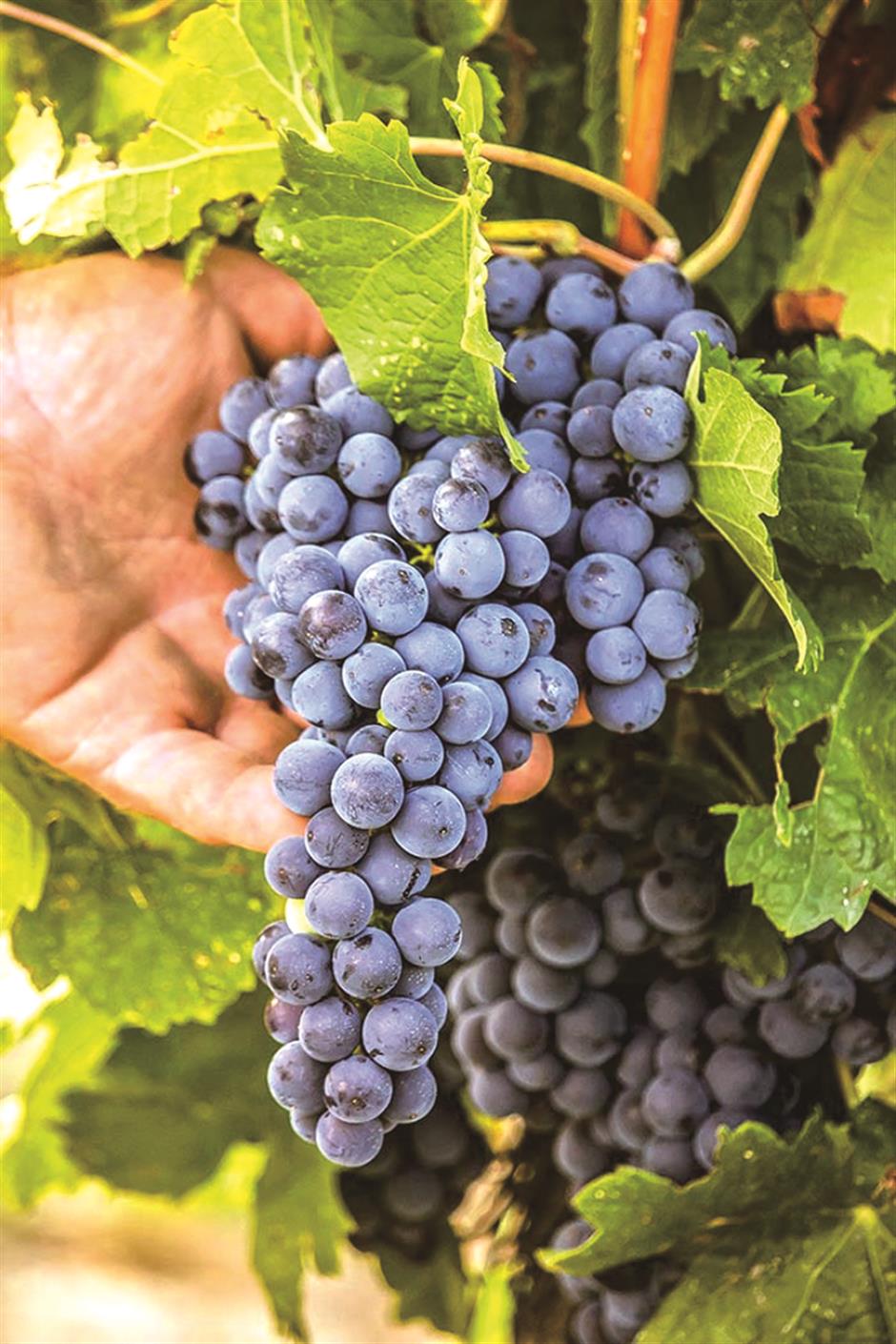Fat-busting wine for healthy life

Fully ripe and ready for picking Barbera grapes
Protein and fat is good for you. As an avid carnivore, I’ve been waiting all my life to hear those words. Nutritional scientists are now discovering what many wild animals have always known, meat and other proteins as well as fat are part of a healthy diet. Of course, everything good in excess is bad.
One important health benefit of proteins and fats is that they help block sugars. In modern science sugar is clearly the villain, a deleterious status that fats use to occupy. Proteins and fats can actually help block bad sugars from carbohydrates as well as provide a greater feeling of fullness that helps stymie overeating. Surprising to many, wines can also help to inhibit the absorption of sugars.
Studies in the US and Europe have shown that alcohol has special sugar blocking properties and lessens glucose production by the liver. A glass of wine or other alcohol will help mitigate the absorption of sugars from starches while also facilitating digestion. However, when consumed in large quantities alcohol calories offset any benefits. Therefore, the healthiest alcohols are relatively low in calories.
Wine is lower in calories than beer and spirits with an average of about 20 calories per ounce. Naturally, all wines are not created equal. Higher alcohol and residual sugar in wines equates to more calories. When watching your calories, it’s wise to avoid high alcohol and sweet wines and instead opt for lower calorie wines. I’d never counsel drinking trendy diet wine brands like Skinnygirl, Skinny Vine and Gia as these unfortunate creations are awful. Instead, I suggest you pick high-quality wines lower in calories.
Low-cal whites
On average, white wines are lower in calories than red wines. Low-cal whites include dry Gruner Veltliner, Muller Thurgau, Abarino and Sauvignon Blanc wines. Lovers of red wines need not loose heart as some reds are also relatively low in calories. Better yet, in addition to inhibiting sugars, these reds also help to mitigate negative effects of a high fat diet.
In 1991, a popular US television show “60 Minutes” aired a program titled “The French Paradox” that was based on a study by French scientist Serge Renaud. His groundbreaking study examined the paradoxical relationship between the high fat and dairy diet of people in southwestern France and their relatively low occurrence of cardiovascular disease. How could these people regularly consume dishes like cassoulet, foie gras, duck confit and other foods, full of artery clogging animal fat, and still have a much lower instance of heart disease than people living in other parts of Europe and the US? Renaud concluded that this was in large part due to the regular intake of red wine.
Cool climate Pinot Noirs and Gamays from Burgundy and Alto Adige certainly qualify as low-calorie fat-busting reds but this week’s featured red wine combines all these attributes with affordability and exceptional food-friendliness.
Italy makes some of the world’s best good value wines and top shelf among them is Barbera d’Alba. The grape is Barbera and the place is Alba in Piedmont. You may know Alba as the home of Piedmont’s world-famous white truffles, but the locals also make some of the world’s finest red wines. The most prized wines of Alba are the Barolo and Barbaresco reds but the region’s Barbera wines offer a distinctive Piedmont wine experience at a fraction of the price.
Ampelographers say Barbera was first planted in Monferrato 800 years ago. The grape had a reputation for making good, if not noble, wines. Traditionally, growers in Alba would select inferior vineyards to grow Barbera and save their best vineyards for Nebbiolo. Exploiting the high yield nature of the Barbera variety, winemakers produced lean and insipid wines meant for immediate consumption — meaning Barbera was the wine of the locals, suitable for daily drinking but not for exporting.

Then about 30 years ago a small number of remarkably good Barbera wines started popping up. Instead of the thin, diluted and overly acidic lightweights of the past, a new breed of Piedmont winemakers started to barrel-age and sometimes even barrel-ferment Barbera wines. The result was distinguished wines featuring amble fruit, structure and complexity. Today, the best Barbera wines come from Alba, Asti and the new Nizza region. Barbera d’Alba DOC wines tend to be more full-bodied and rounder than Asti versions, offering sensations of black and red berries with soft tannins, while Babera d’Asti wines are usually fresher offering good color, lively red fruit and berry aromas and flavors and pronounced acidity. The new Nizza DOCG region has the strictest maximum yield and aging requirements for Barbera wines and since the first vintage in 2014 these wines have been widely acclaimed for their finesse, balance and age-worthiness. The Barbera del Monferrato DOC region overlaps with Asti and is the largest zone of Barbera production. Barberas from this region tend to be less distinguished than their counterparts in Alba, Asti and Nizza but many are aromatic and provide pleasant drinking. A growing number of interesting Barbera wines are also being made in Puglia, Sicily, Sardinia and the New World.
Some top Barbera d’Alba producers have wines available in Shanghai, including Aldo Conterno, Pio Cesare and Roberto Voerzio. I also recommend Giacosa Fratelli. Most recent vintages for Piedmont Barberas have been good with 2016 standing out. Like young Pinot Noirs, Barbera wines have good acidity so the ideal serving temperature ranges from 14-16 degrees Celsius.
Where to buy in Shanghai
China Wine & Spirits, Room 702, No. 1, Lane 1136, Xinzha Rd, 6087-1811
Aldo Conterno Conca Tre Pile Barbera d’Alba DOC
Giacosa Fratelli Barbera d’Alba DOC
www.everwines.com
Pio Cesare Fides Barbera d’Alba DOC
Pio Cesare Barbera d’Alba DOC
www.rubyred.com.cn
Roberto Voerzio Il Cerreto Barbera d’Alba DOC















